Title : New materials to provide portable rapid diagnostic point of care detection of infectious diseases in 30 minutes - Gram-negative, Gram-positive and fungal differentiation via enhanced hyperselective volume phase desolvation nanomaterials
Abstract:
New thermoresponsive polymer additive technologies have been employed to engineer targeted pathogenic organisms via capture / release technologies. The unique mode of action of binding allows them to target Gram-negative, Gram-positive, fungi, human dermal fibroblast, amoeba or other organisms via enhanced hyperselective volume phase transition (VPT) desolvation. This unique concept has been employed in a etiological swab to detect the presence of microbes in an animal in-vivo mixed infection model, with a 100% success rate at determining the infective species present with no toxicology observed.
A bespoke hydrogel formulation was developed to reduce non-specific binding outside of the VPT-additive hyper selectivity. An in-vivo animal trial was carried out to determine efficacy and safety. Test conditions were: G Control, G1 S. aureus, G2 P. aeruginosa, G3. C. albicans, G4a, S. aureus + P. aeruginosa, G4b P. aeruginosa + C. albicans. This study was performed on human ex vivo and animal cornea infection studies (rabbit) where after wear the rabbits were tested to determine prospective toxicity and immunogenicity of the device for a 4 week observation period post wear.
VPT-assisted binding of microbes was shown to provide excellent discrimination for reporting specified target organisms (S. aureus, P. aeruginosa and C. albicans) in all combinations studied. VPT-assisted binding of microbes was shown to provide excellent discrimination for reporting specified target organisms in all combinations studied. Ex-vivo corneas were used to develop the methodology of testing and established that a 30 minute wear time was ideal to provide accurate results. In the in vivo trial no issues with biocompatibility of apparent toxicity was indicated in any of the test specimens. Testing of the RDK showed 100% success in diagnosing single and mixed infections after half an hour of wear. Issues were found in the robustness of the test device (tearing) leading to a reformulation of our contact lens material to provide additional re-enforcement.
Further work has shown promising application in binding parasites and other biological species via thermoreversible binding. The VPT effect enhances binding affinity to the ligand meaning this novel technology has great promise in a range of scenarios across the health, food and biotechnology sectors.



